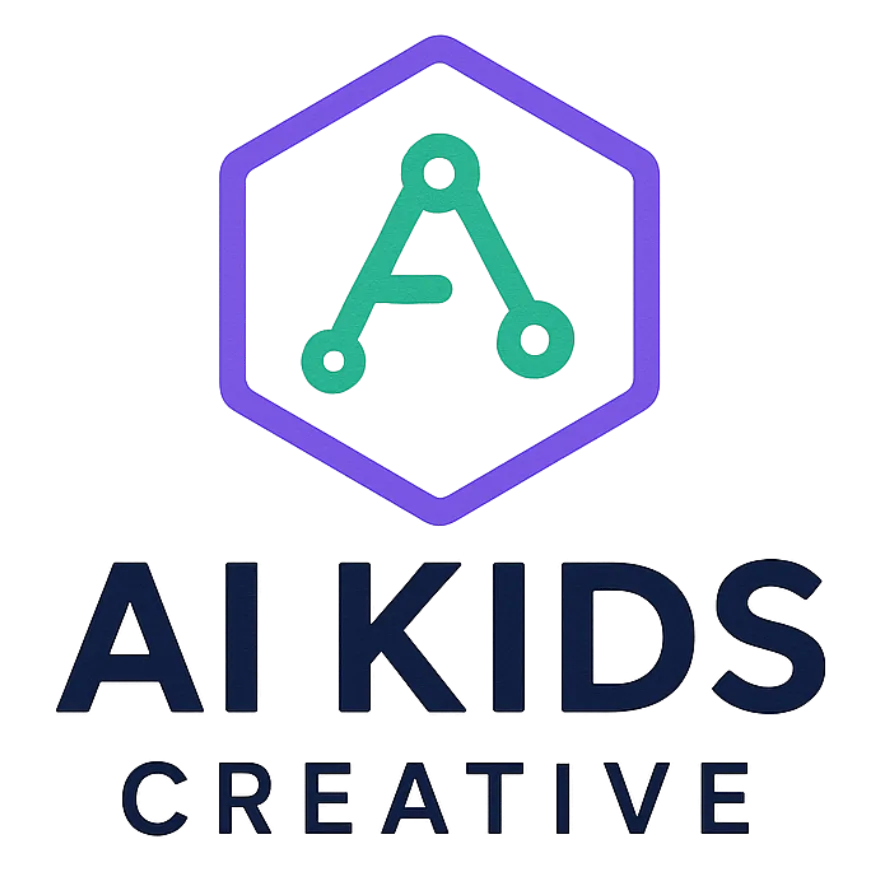Resources
Thinking kids to think, create and question
Free & Paid
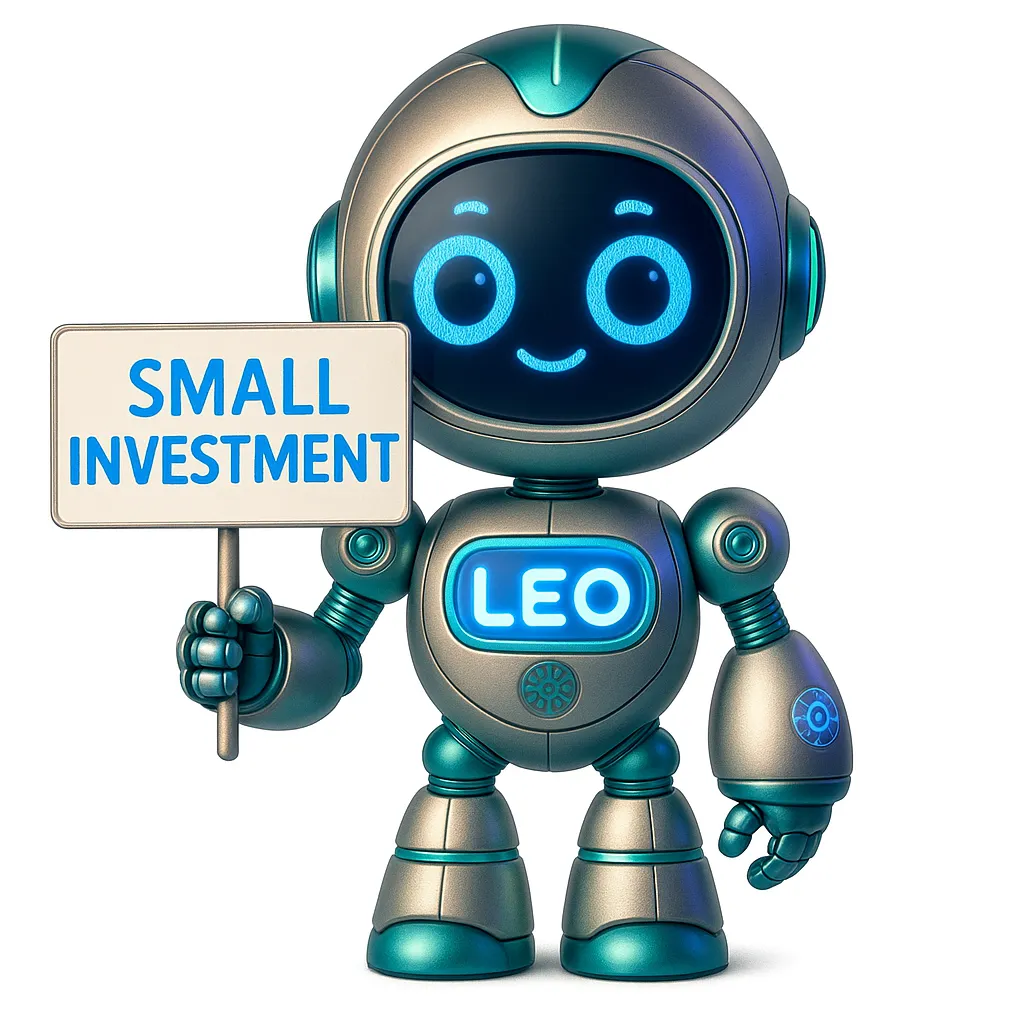
Teach Your Family AI
A self-paced mini-course that helps parents and kids learn AI together in just a few hours. You’ll discover:
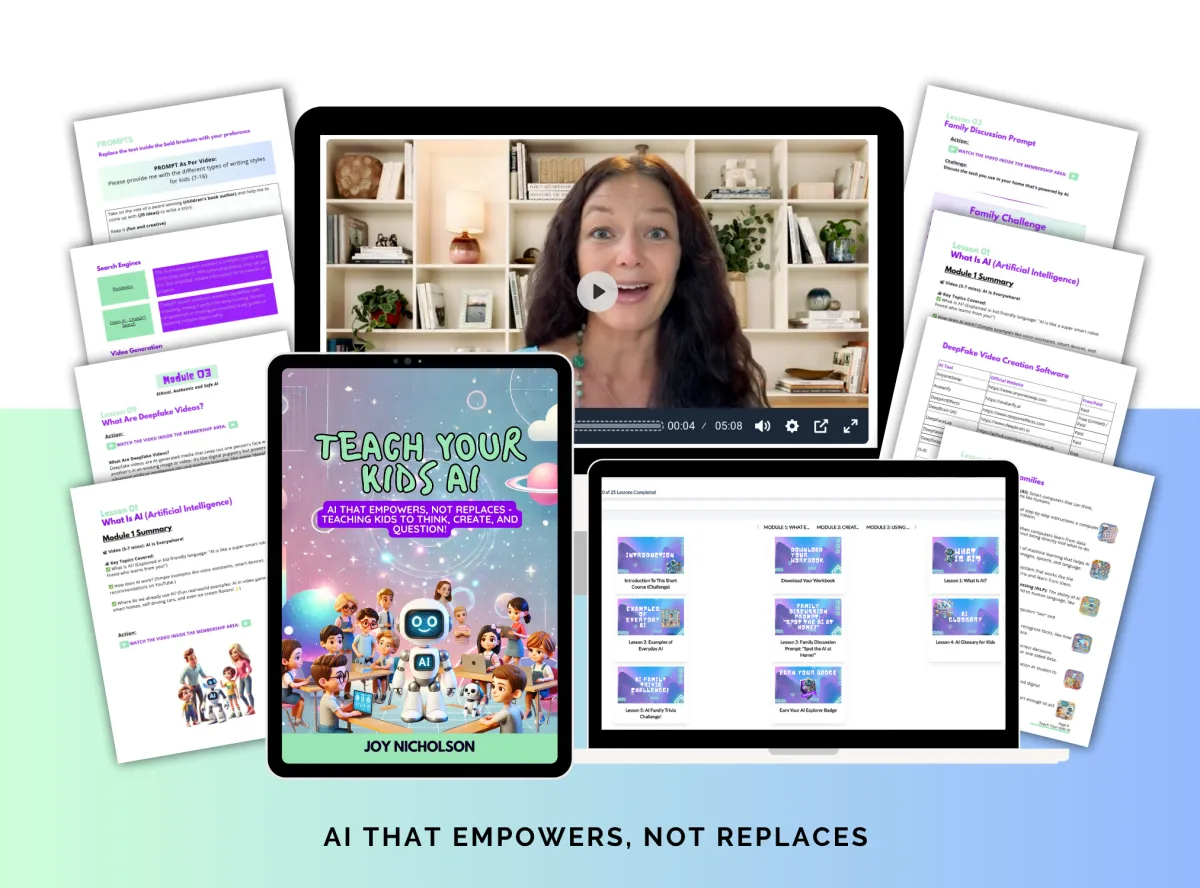

Family First Toolkit
A quick-start guide for families new to AI and includes practical tips, fun activities, safety advice, and tool recommendations.
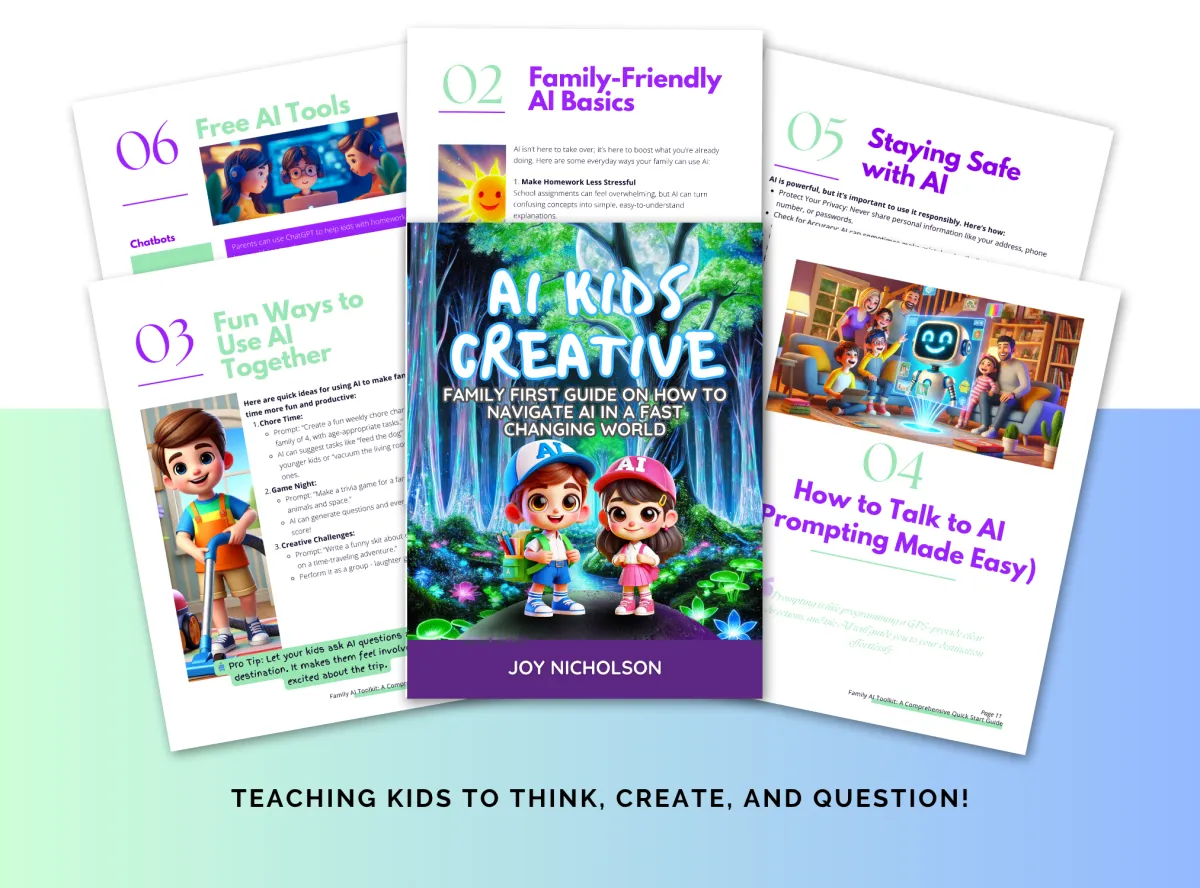

Don't Let AI Raise Your Kids
A Parent’s Guide to Homeschooling with AI, create interest based lessons and more.


Sides hustles for Teens
COMING SOON
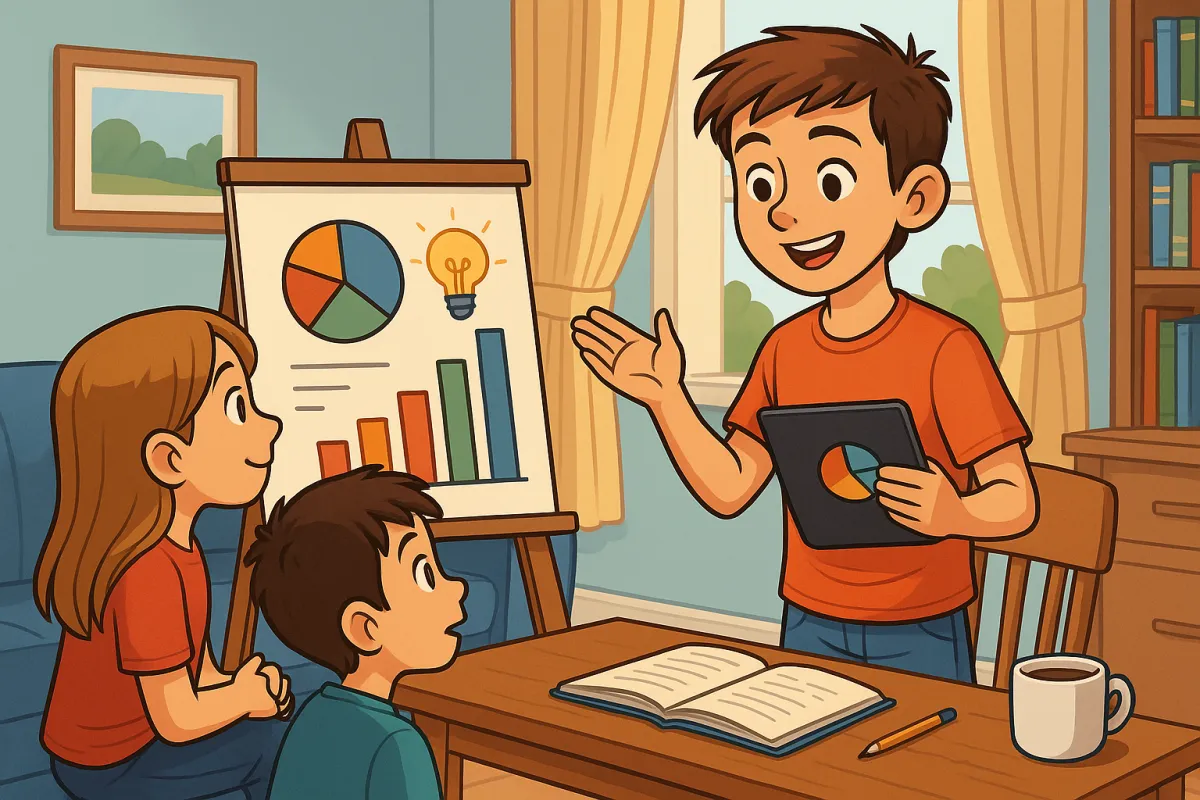
Read Our Newest Blogs
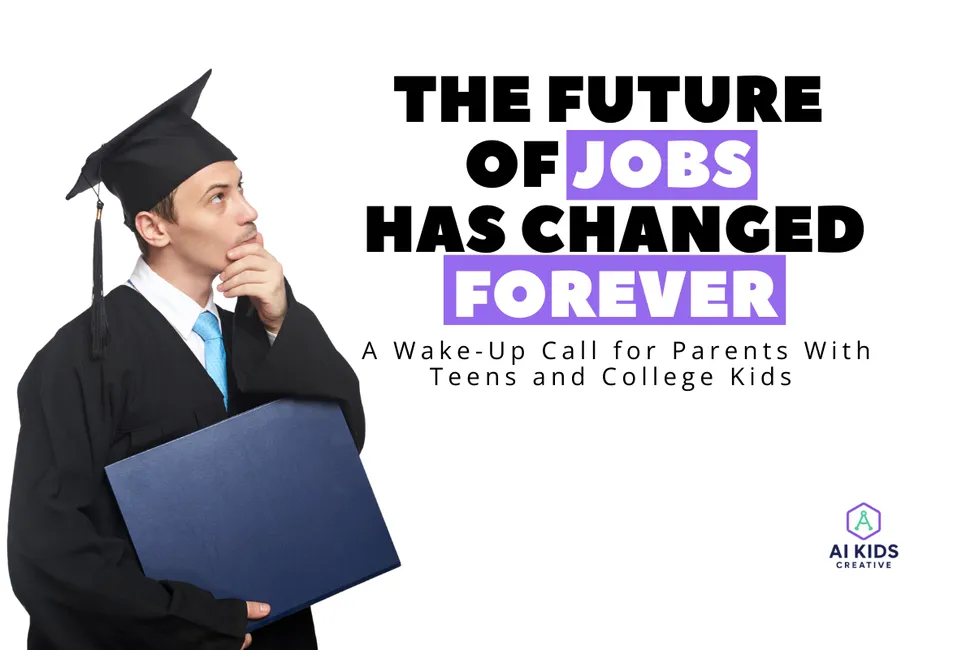
The Future of Jobs Has Changed Forever
“We are preparing students for jobs that don’t yet exist, using technologies that haven’t been invented, to solve problems we don’t even know are problems yet.”
— Richard Riley, former U.S. Secretary of Education

The Future of Jobs Has Changed Forever
A Wake-Up Call for Parents With Teens and College Kids
You know that moment when your kid walks across the graduation stage, eyes bright with possibility, clutching a degree you helped fund, believing the world is finally going to open its doors?
Then nothing. Silence. Or worse… automated rejection emails.
That’s the new reality.
Let’s start with the country facing the sharpest sting right now: The United States.
As of mid-2025, 7.3% of college grads aged 20–24 are unemployed. That’s not just a bump - it’s the highest rate in over a decade outside of the pandemic. And this is in an economy that’s technically “recovering.”
But here’s what’s wild:
At the same time that Gen Z grads are struggling to find work, global industries are crying out for workers. We’ve got record labor shortages and record graduate unemployment. That should be impossible.
And yet - it’s happening.
So, if you're a parent raising a teen or prepping your college student to “launch,” you need to hear this loud and clear:
The job market your kid is entering no longer plays by the rules you were raised on. And if you don’t help them adapt, they may get left behind before they even begin.
Let’s break it down, with no fluff and no fear. Just facts, truth, and a clear path forward.
The College Degree Isn’t the Ticket It Once Was
Here’s what we’ve always believed:
Work hard. Get into college. Graduate. Get a job.
But let’s look at the actual numbers from 2025:
USA: 7.3% unemployment for recent grads (20–24)
UK: 6.8% unemployment for new grads
Australia: 6.1% and rising
European Union (average): 5.9%
Global average: 5.5%
And let’s talk real for a second. Getting into college these days? It’s like buying a small house, without the keys or the equity. In the U.S., the average cost to attend a public university as an out-of-state student has soared past $27,000 a year. Private colleges? You're looking at over $55,000 per year, and that’s before you even factor in books, rent, food or the unexpected dental visit that no one saw coming. Let that sink in.The average graduate walks away with $38,000 in debt, and nationwide, student loan debt has ballooned to a jaw-dropping $1.8 trillion.
Now hear me clearly. I'm not saying don't send your child to college. I’m not anti-college. What I am saying is this: the world has changed, the data is clear, and it's time to start having real conversations at the dinner table.
College still has value, but it's no longer a guaranteed path to stability. It's not a golden ticket. Parents, this is your call to weigh the cost, the potential return, and your child's unique gifts. What do they want to do? What path leads them there without burying them in debt and disillusionment? This isn't about fear. It's about informed choices.
And let’s be real - these are just the official stats. Many more grads are underemployed: working retail or admin jobs that don’t require degrees, just to make rent.
Why is this happening?
The short answer: the system is out of sync.
The long answer? That’s what this article is about.

This Isn’t Just About AI - But AI’s the Tipping Point
Everyone’s pointing the finger at AI, and yes, it’s a major player. But it’s not the only reason your child’s job prospects are shaky.
Here’s the truth:
There are fewer entry-level jobs than there used to be.
AI and automation are wiping out whole categories of beginner roles.
Junior copywriters, support agents, data entry clerks, junior analysts - many of these tasks are now handled by ChatGPT-like tools and automation platforms.
As Accountancy Age reports, the Big Four accounting firms (PwC, KPMG, EY, Deloitte) slashed graduate hires by nearly 30% in just two years. Why? Because AI now does the grunt work new grads used to cut their teeth on. (Source)
Experience Inflation is real
Jobs labeled “entry-level” now ask for 3–5 years of experience, plus tech skills many universities don’t even teach. That’s a recipe for rejection.
Offshoring + Globalization = Increased Competition
Companies are outsourcing jobs overseas where labor is cheaper. Your child is not just competing with other local grads, they’re up against a global talent pool.
Simultaneously, there’s a global labor shortage
Yes. You read that right. We’ve got millions of jobs sitting unfilled around the world:
Over 10 million open jobs in the U.S.
Healthcare systems in the EU and Australia are begging for nurses, techs, and support staff
The trades are desperate for apprentices and skilled workers
Construction, logistics, and energy industries can't hire fast enough
And yet, thousands of college grads can’t get hired.
Why? Skills mismatch.
They studied hard. But they weren’t trained for these roles.

The Global Mismatch Between Education and Employment
Most universities haven’t caught up to the reality of today’s economy. They’re still preparing kids for the job market of 2012, not 2025.
They’re not equipping students with:
Prompt engineering or AI literacy
Digital communication and real-world collaboration tools
Data fluency, problem-solving, and interdisciplinary adaptability
The ability to create, not just follow instructions
According to the World Economic Forum, 44% of workers’ core skills will shift within the next 5 years, and most education systems are nowhere near ready. (WEF Jobs Report, 2023)
Even employers are panicking.
A 2025 Deloitte survey found that 90% of CEOs believe their workforce isn’t ready for AI adoption. That’s not just about tech - it’s about mindset.
So while students are graduating with academic theory, employers are begging for workers with real-world capability.
What Does This Mean for Your Child?
Let’s say it straight:
A degree is no longer enough. It’s a footnote - not a guarantee.
Your teen or young adult will need to stack their skills fast. And they’ll need to be:
Adaptable
Digitally fluent
EntrepreneurialAI-aware
Constant learners
Because the job market they’re walking into?
It’s not a straight road. It’s a shifting maze. And every six months, the walls move.

Real Roles Are Changing, Not Disappearing
It’s not all doom and gloom. There's a massive opportunity for those who pivot.
Let’s look at where actual demand is exploding:
AI Audit and Ethics
Big Four firms (Deloitte, PwC, EY (Ernst & Young), and KPMG), are building entire departments to audit AI systems for bias and fairness.
These jobs didn’t exist five years ago. Now they’re critical. And they need people with ethics, communication, and technical understanding.
Human-AI Teamwork
The future isn’t “AI replaces humans.” It’s AI + humans doing better work together. If your kid knows how to use AI tools with discernment, they’ll leapfrog others.
High-skill Trades and Vocational Roles
From solar panel installers to robotics techs to wind turbine engineers - the “blue collar” jobs of the future are green, smart, and in high demand.
Educators, Coaches, and Critical Thinkers
Ironically, as AI spreads, human connection becomes more valuable. Those who can teach, lead, mentor, or inspire? Always needed.
So What Can You Do Right Now?
This is where it gets real.
You can’t control the economy. But you can give your kids the tools to navigate it.
Here’s what I tell every parent I work with:
1. Talk about the real job market
Stop pretending it’s “just a phase” or “they’ll figure it out.”
Sit down and walk through what jobs are rising and which are fading. Look up job boards. Research together.
2. Prioritize skills, not just grades
Help your child learn:
How to write strong prompts for AI tools
How to build a portfolio or side project
How to collaborate online
How to self-learn with platforms like YouTube, LinkedIn Learning, etc.
3. Encourage short-term wins
Certifications, micro-courses, part-time gigs, freelancing - all of these count more than ever.
Don’t shame the side hustle. Encourage and support it.
4. Stay humble and flexible
Your child may need to take a step sideways before stepping forward.
The first job doesn’t define them, but how they adapt does.
5. Learn AI together
Seriously. This one’s non-negotiable.
Whether you homeschool, have a child in high school, or a uni-bound teen, you need to understand what AI is doing to the world of work.
And no, it’s not just about coding. It’s about thinking, communicating, and making wise choices with powerful tools.

The Jobs AI Can’t Touch - And They Actually Pay Well
Look, not every teen is going to be the next prompt engineer or data whisperer. And that is a good thing. Because the world still runs on people who can fix a leaky pipe, wire a house, or keep the lights on when your smart fridge freaks out. The trade industry is not just a backup plan - it's recession-proof, AI-proof, and in serious demand.
Let’s break it down.
In the UK, qualified electricians are pulling in an average of £33,500 a year. That’s the middle ground. Skilled and self-employed? You’re looking at £60k+ easily. And plumbers? Same ballpark. Many hit £45–73k once they’re experienced and running their own show. That’s solid, respectable, and not chained to a desk or algorithm.
Now head over to Australia, where plumbers are averaging A$81,000 a year. Some hit A$100k+, especially in high-demand areas. And electricians? If they’re working FIFO (fly-in fly-out) in remote areas, some are banking A$200,000 a year. Yep, you read that right. Even city-based sparkies and tradies can earn A$100–150k once they’re licensed and have a few years under their belt.
The reality is that these jobs aren’t going anywhere. You can’t automate a new house build, outsource emergency electrical work to a bot or hire a robot to do your landscaping. These roles require real hands, real skills, and real thinking. And the world’s shortage of skilled labor? It’s getting worse, not better. That means more demand, higher pay, and serious job security.
So if your teen’s not vibing with spreadsheets or scripting languages, maybe they’re built for something else. Something tangible. Something that matters. Talk to them. Help them see the dignity and opportunity in doing what the world still physically needs. Because while the tech hype roars, the people who can build, fix, and create with their hands? They’re the ones quietly cashing in.
Bottom line: These aren’t fallback careers. They’re thriving, stable, hands-on roles that pay as well as (or better than) many office jobs, and come with serious dignity, independence, and resilience to AI.
Final Thoughts: We Can’t Parent Like It’s 1999
This shift isn’t coming.
It is here.
We’re standing at the intersection of a global labor transformation, and parents can’t afford to be passive observers.
The rules have changed. The future belongs to those who adapt, question, create, and collaborate.
And your kids? They’re not behind.
They just need guidance that matches the moment we’re in.
So let’s rise to it.
🔗 Want to Equip Your Family for the Future of Work?
I'm building tools, courses, and resources to help families just like yours embrace AI—not fear it.
→ Visit AI Kids Creative to discover how to future-proof your child with real-world, human-first AI skills.
→ Grab our free Family AI Toolkit or explore our Teach Your Kids AI mini course—made for real parents, by a real one (that’s me).
Your kids don’t need perfect grades.
They need a plan—and someone who gets it.
And guess what?
You’re already one step ahead just by being here.

Sources Cited in the Blog Post
Bureau of Labor Statistics (BLS)
https://www.bls.gov/news.release/empsit.t04.htm
(U.S. graduate unemployment data as of June 2025)Washington Post, July 2025
https://www.washingtonpost.com/education/2025/07/03/unemployed-college-graduates/
(Young grad job crisis, personal accounts)Accountancy Age – “The Big Four’s New Favourite Grad Is AI”
https://www.accountancyage.com/2025/06/23/the-big-fours-new-favourite-grad-is-ai/
(How traditional grad roles are shifting toward AI)ONS (UK Office for National Statistics)
https://www.ons.gov.uk
(Graduate unemployment rate in UK as of May 2025)Eurostat
https://ec.europa.eu/eurostat/
(EU average graduate unemployment rate)Australian Bureau of Statistics (ABS)
https://www.abs.gov.au/statistics
(Australian graduate unemployment rate, 2025 data)Graham & Sons Plumbing (Australia)
https://grahamandsonsplumbing.com.au/blog/how-much-do-plumbers-earn-in-australia/
(Plumber salary statistics in Australia)MyJobQuote UK
https://www.myjobquote.co.uk/tradesadvice/how-much-do-plumbers-make
(Plumber and trades salaries in the UK)1st Electricians UK
https://1stelectricians.co.uk/blog/electrician-vs-plumber-salary-in-the-uk
(Electrician salary averages and ranges)Financial Times – Australia’s Skilled Labor Boom
https://www.ft.com/content/0bef16b6-f8ab-48e6-9978-6c496ff2f19f
(Fly-in fly-out electricians and trade pay in Australia)U.S. Federal Reserve & EducationData.org
https://educationdata.org/average-student-loan-debt
(Student loan debt totals and averages in the U.S.)World Economic Forum
https://www.weforum.org/reports/the-future-of-jobs-report-2023/
(Top growing and declining job categories globally)Anthropic x National Education Association
https://www.nea.org
(Mentioned in ongoing partnerships between AI companies and education leaders)
***All stats are accurate at time of writing, but things change- always double-check the data for yourself.***
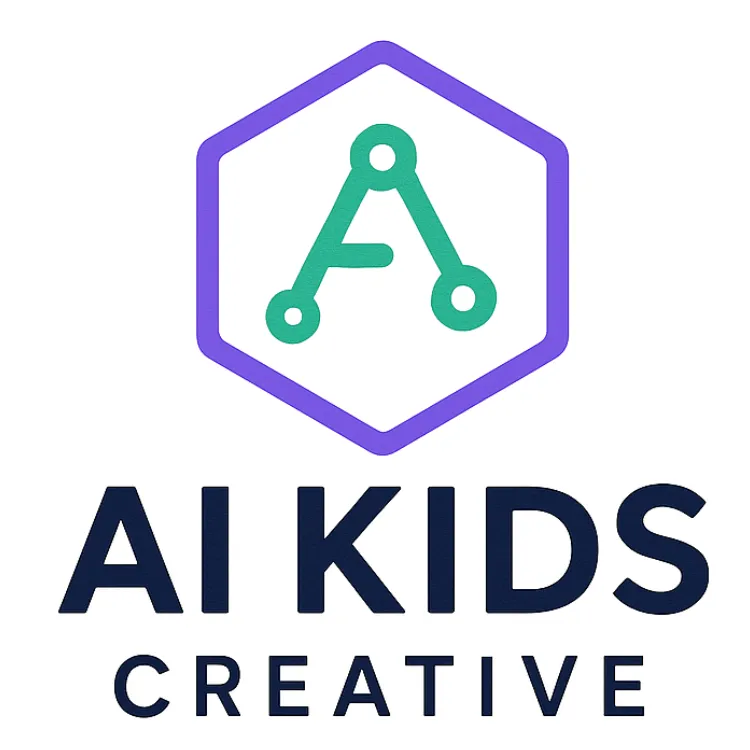
© 2025 AI Kids Creative. All Rights Reserved. | Privacy Policy | Terms & Conditions | Disclaimer
